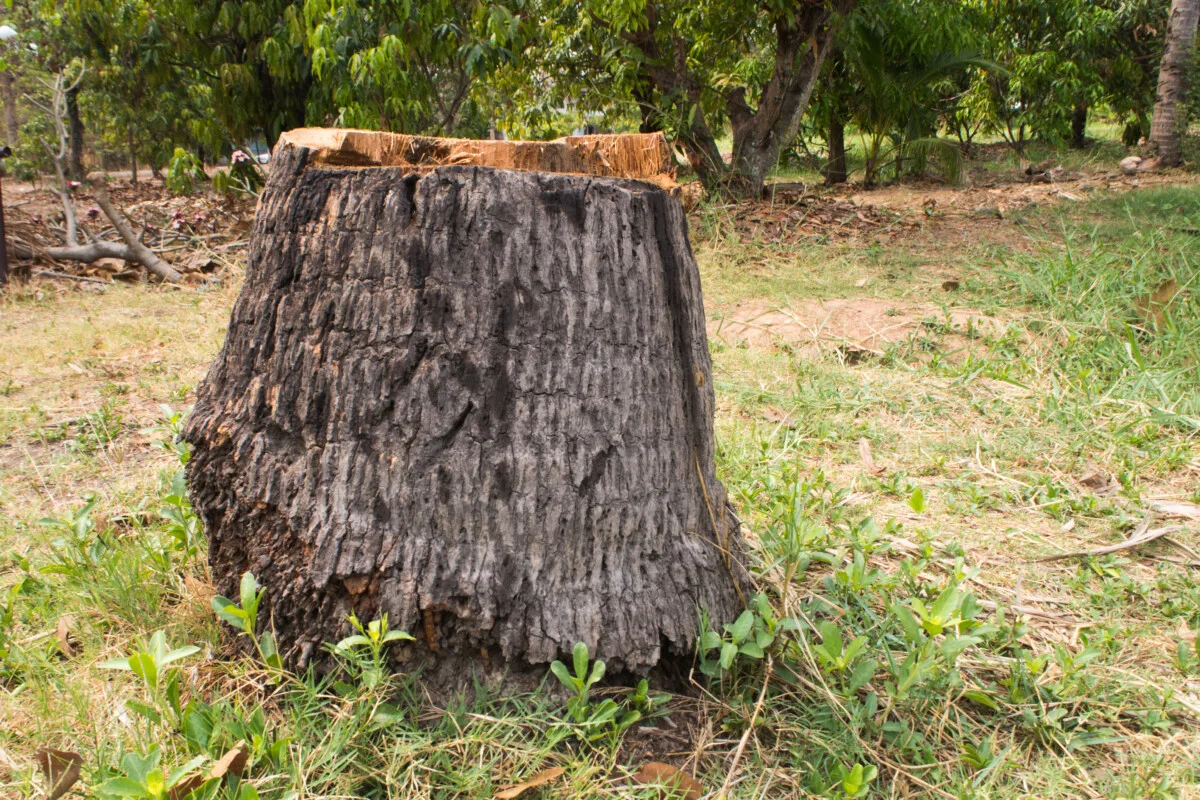
There’s something uniquely special about trees.
Trees give us cool shade in summertime and spectacular color in fall. They help take the dullness out of the winter landscape and are among the first plants to signal spring is on its way.
But more than this, the slow but steady growth of trees marks the passage of time and many of life’s milestones. Perhaps your favorite tree is the one you climbed as a child or spent countless afternoons beneath its boughs with a book.
It’s no wonder we often form a deep emotional attachment to our trees.
Our trees become such a fixture of the home and garden that it can be hard to see them go. When a tree dies or needs to be cut down, it can vastly alter the look and feel of your landscape and leave some mighty big shoes to fill.
All the more reason to plant more trees!
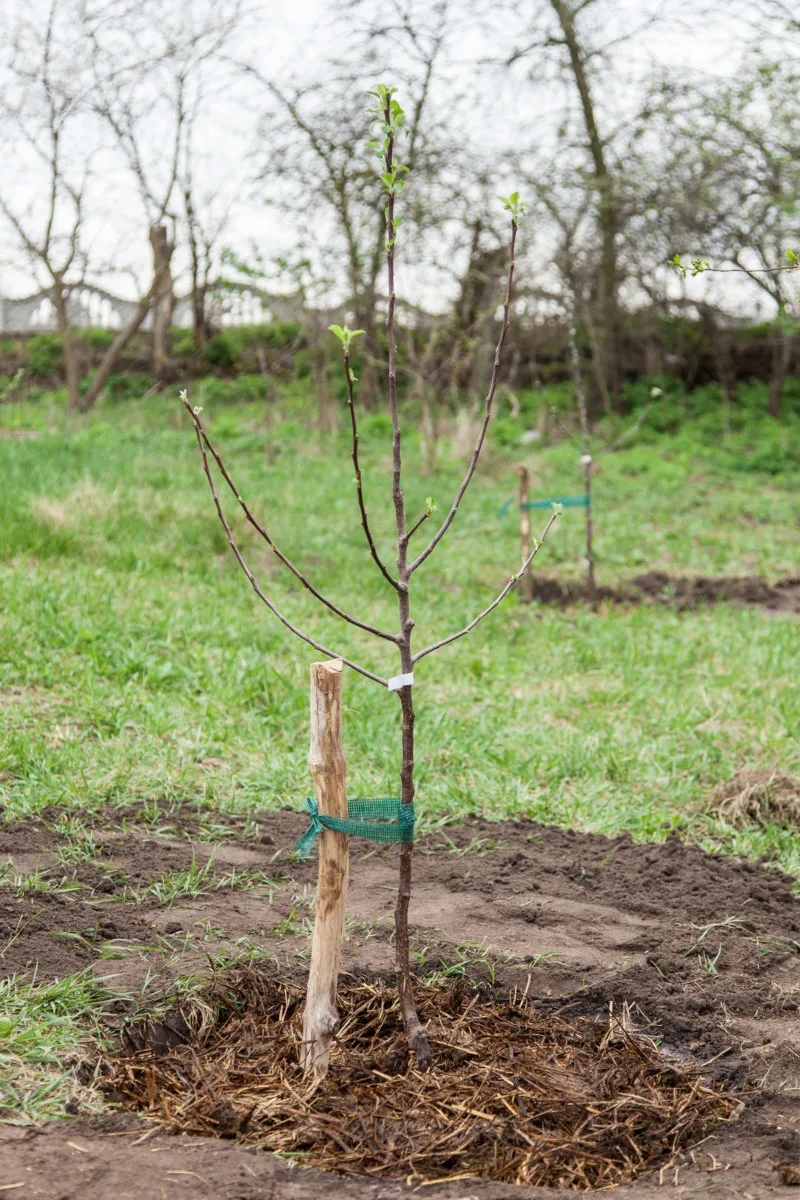
After a tree is taken down, the stump left behind can be an eyesore and a tripping hazard – and not to mention a somber reminder of your bygone tree.
Stump removal takes a bit of work. You can rent a stump grinder or dig it out by hand. You can even pee on it to rot it away faster.
The path of least resistance, however, would be to leave that tree stump right where it is in the ground. Like subtraction by addition, a plain tree stump can be given renewed purpose as a one-of-a-kind lawn ornament, piece of furniture, or work of art.
So when life hands you a tree stump, it can be an excellent opportunity to let your creativity blossom. Here are 10 fantastic ideas for making an ordinary tree stump into something incredible.
1. Tree Stump Planter
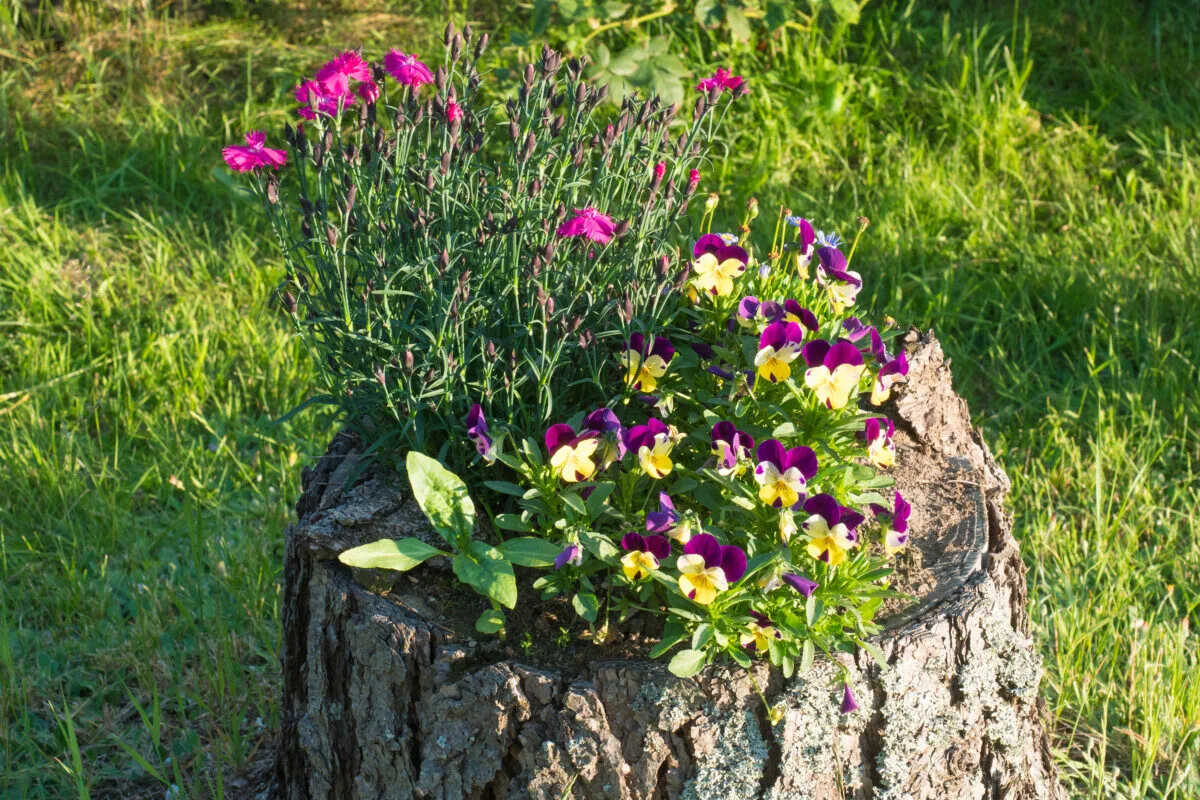
It’s a dull old tree stump one day and a beautiful garden focal point the next!
A tree stump planter – filled with a mix of annuals, spring bulbs, trailing plants, and creeping ground covers – is a super clever way to bring your dead tree stump back into the land of the living.
To make your tree stump into a wooden plant pot, you’ll need to hollow out the center to create a planting nook in the middle of the trunk.
Leaving a couple of inches around the edge to serve as the rim, use a drill or saw to clear away bits of wood from the middle of the stump. You’ll want to make it deep and wide to comfortably house the plants’ roots.
For better drainage, drill some holes along the bottom of the bowl or add an inch or two of gravel.
When you’re satisfied with the size and shape of the planter, fill it up with compost and plant your plants.
Make the tree stump planter an eye-catching statement piece by adding a variety of flowers around the base of the trunk. Here are some gorgeous tree stump planter ideas to inspire your own design.
2. Mossy Tree Stump
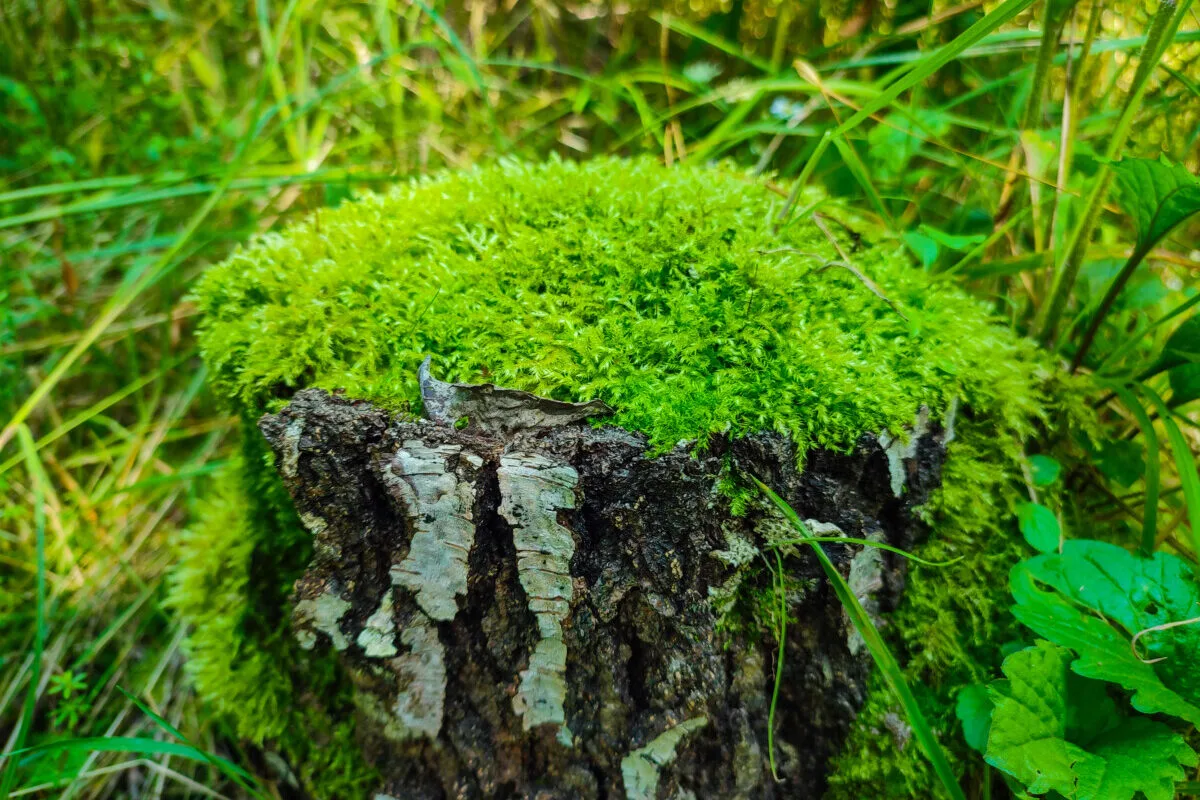
If your tree stump is situated in a damp and shady spot where other plants refuse to grow, creating a woodlands look with moss could be the right solution for you.
Live tree mosses are low-maintenance plants that can be purchased by the bag from most plant nurseries. Look for moss species native to your region that grow specifically on trees.
To get moss started on a tree stump, slather wet mud over the surface. Nestle the moss onto the top and sides of the stump to adhere it to the wood, and gently mist the area.
Keep the tree stump moist at first with daily spritzing until the moss is established and starts to colonize new parts of the trunk. Then, simply water your mossy stump at the same time you would irrigate the rest of your garden.
3. Tree Stump Mushrooms
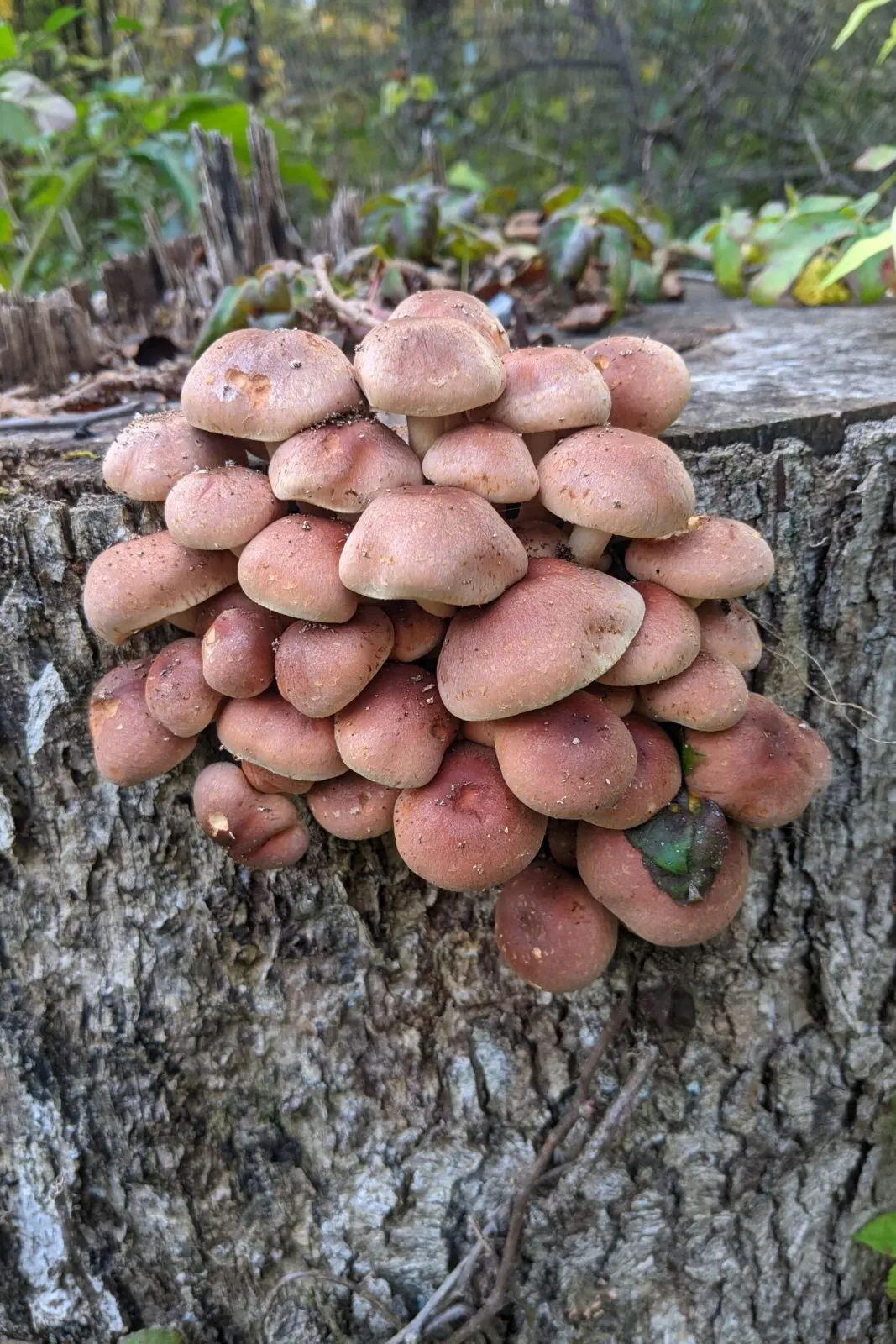
(She suggests leaving the wild mushrooms for experienced foragers.)
Growing mushrooms is a weird and wonderful departure from your typical leafy greens.
You probably already know you can use cut hardwood logs to grow an array of delicious gourmet mushrooms. There’s not much to stop you from giving your tree stump the same mushroom-inoculation treatment.
For the best results, your stump would need to be in a shady to dappled sunlight location. It’s also best if the stump comes from a hardwood tree. As long as yours meets these requirements, a tree stump is a great option as a fungi-growing medium.
The steps for growing mushrooms on a tree stump are the same as wooden logs. Drill holes in the wood in a checkerboard pattern and plug them up with shiitake, oyster, lion’s mane, reishi, maitake, or some other wood-loving mushroom spawn. Seal the plugs with wax and keep the wood moist.
There’s another added bonus for growing mushrooms on tree stumps. As the mushrooms develop, they absorb nutrients from the decaying wood. This will help rot down that tree stump much more quickly.
4. Wildlife Waterer
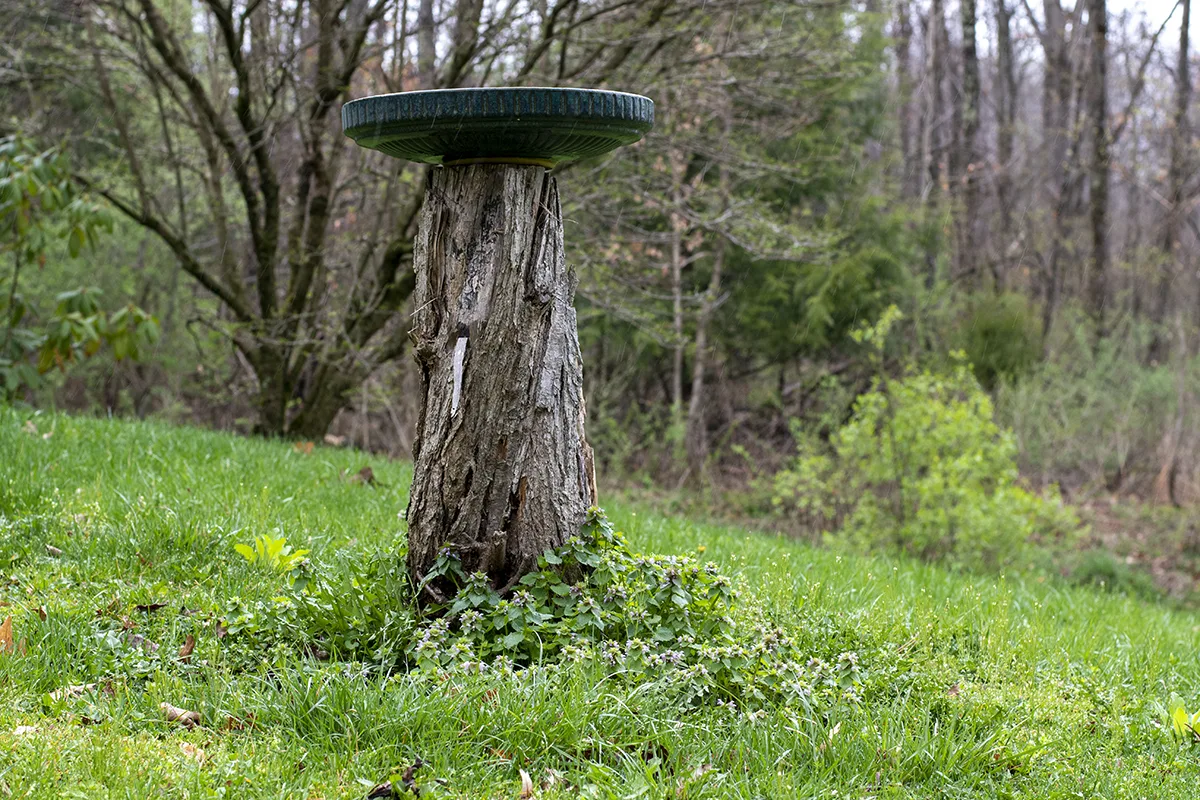
A tree stump is fairly boring and uninteresting on its own. But you can slap a watering station on top to instantly transform it into a lively creature feature for your yard.
A sturdy and flat-topped stump is the perfect natural pedestal for setting out birdbaths and other wildlife watering stations.
It’s about as no-fuss as DIYs go. If you have an old birdbath basin, great! If not, set out a shallow 2-inch deep dish, pan, or bowl on top of the tree stump and fill it up with water. Once the birds have discovered it, it’ll be a delight to watch their frolicking bath time routine.
Pile up some pebbles on one side to make it a welcoming (and safe!) spot for bees and butterflies to indulge in as well.
5. Sundial Mount
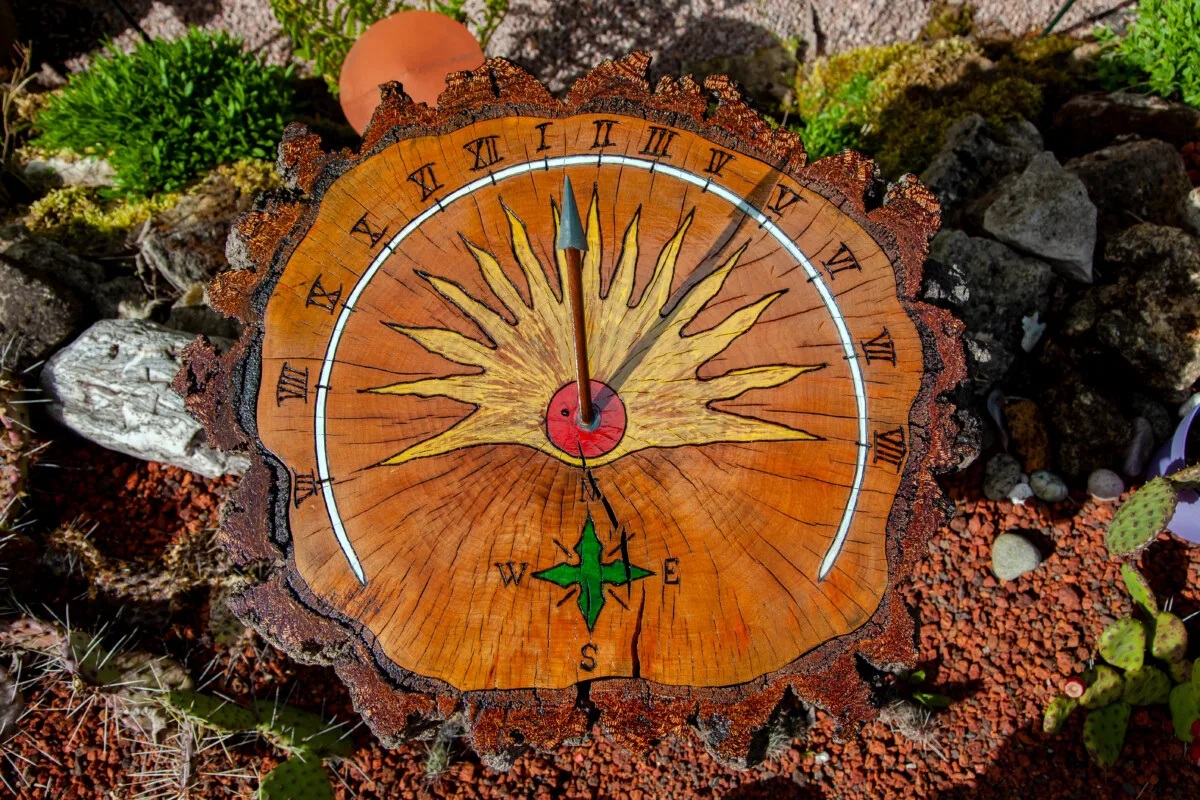
Before watches, clocks, and smartphones, sundials were the simple technology used to indicate the time of day.
Using sun and shadow to track the passage of time, sundials aren’t always precise in their time-telling and are totally useless at night. Still, they’re pretty neat.
Sundials will add interest to your garden décor and can come in handy when you need a gist of the hour – especially if you often lose track of time working in the garden.
A tree stump that’s located in a sunny and open area is an ideal spot for mounting a sundial. For the most accurate time reading, the top of the stump should be perfectly flat and horizontal. If your tree stump isn’t exactly even, use a level and sander to smooth out the surface.
If you don’t have a ready-made sundial squirreled away in your shed, you can make your own from a flat rock.
6. Gnome Home
An absolutely adorable use for a tree stump, a gnome home is sure to add a touch of whimsy and magic to your outdoor spaces.
A gnome home is better suited for larger stumps, at least 4 to 5 feet tall. The top of the trunk is cut at opposite angles to accommodate a pitched roof. With a plywood frame attached to the top, cedar shakes are glued together to create rustic shingles. Use a chainsaw and chisel to cut out a set of stairs, the doorway, and window openings.
Get the basic gnome house structure down, and then it’s all about the fun little details. Carved doors, stained glass windows, tiny wind chimes, twinkling lights, and a wee garden filled with low-growing and colorful blooms are some decorative elements that any imaginary elf would love.
Shorter and narrower tree stumps can become a centerpiece for an equally enchanting fairy garden, too.
7. Tree Stump Tables
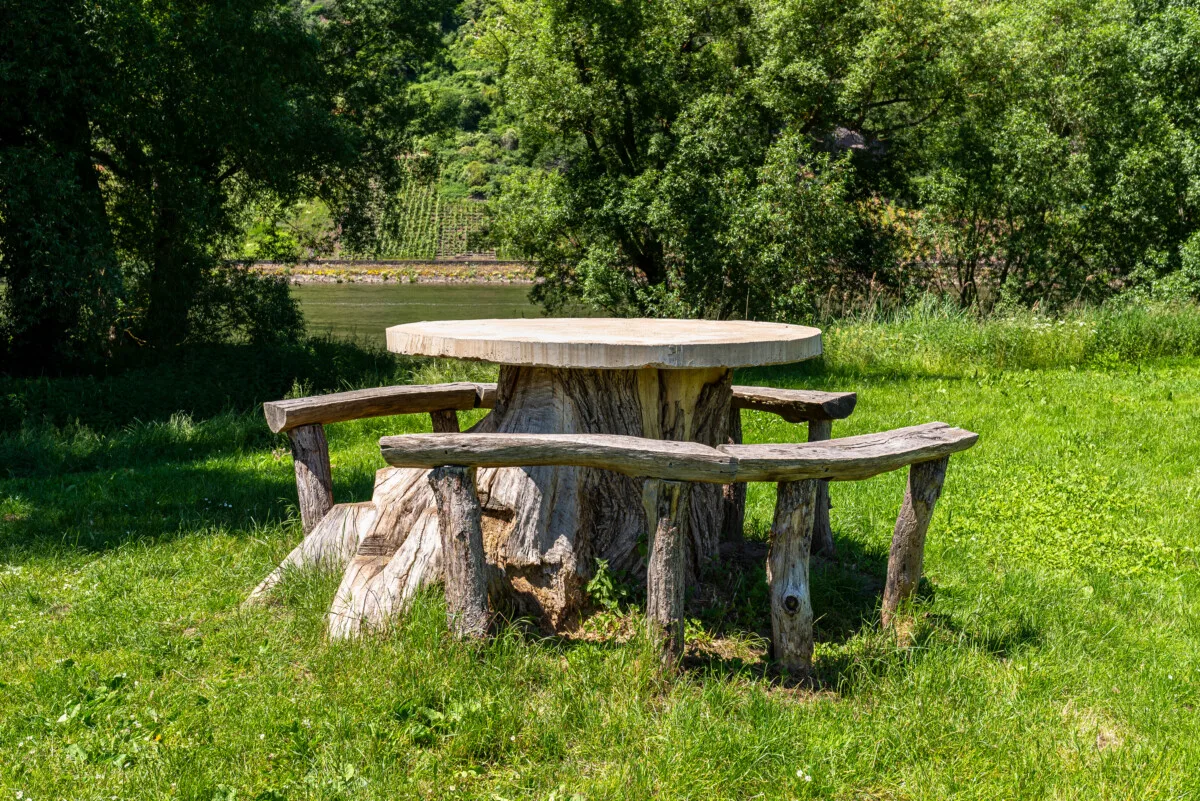
It’s not hard to see a table in a tree stump.
These are nature’s tabletops, after all. And when you use your tree stump as the table base, the job’s already halfway done.
The natural beauty of a tree stump table – with its unique markings, knots, and textures – means no two will look alike. If your stump happens to be in a spot that’s ideal for outdoor entertaining, it can readily become a charming and functional piece of furniture.
Smaller stumps can instantly become simple side tables and stools without any special treatment.
For a bigger table to gather round, a wide and sturdy stump can be topped with a large wood slab. Or you can make your own table topper from pallets, barn boards, or other reclaimed materials. Another option is to upcycle a glass or wood top from an old set.
Apply a few coats of wood sealer so your bucolic patio set will last a long time.
8. Games Table
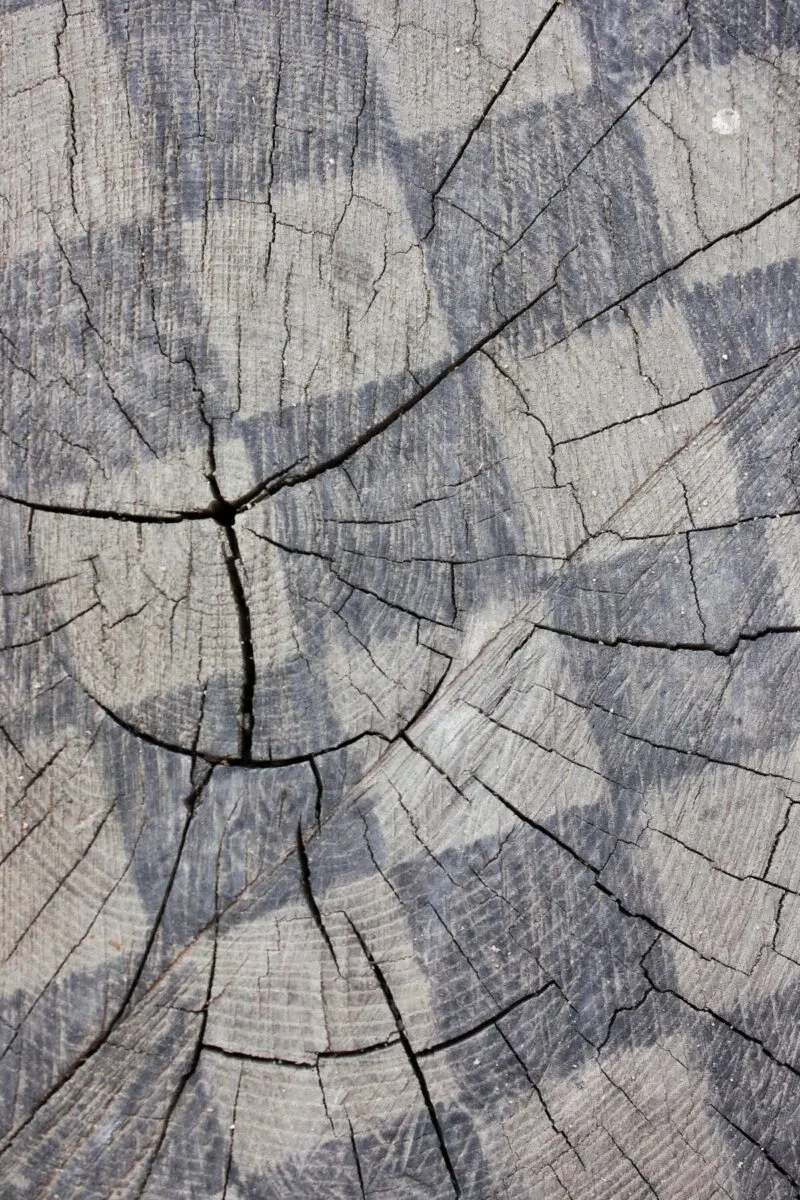
Another brilliant idea for a flat-topped tree stump is to make it into a permanent outdoor gaming table.
Pull up some lawn chairs and keep the little ones entertained with garden-themed tic tac toe. Instead of the usual X’s and O’s, river rocks are painted into cute bumblebees and ladybugs.
For the older kiddos, a stump can be remade into a chess and checkers board with some black paint and masking tape.
9. Treehouse
Who says treehouses can only be built around living trees?
In this DIY, a kids’ playhouse is taken apart and reassembled on top of a tree stump:
Here’s an example of a more elaborate stump house, replete with a suspended bridge, spiral tube slide, screened windows, and a skylight.
Unlike a treehouse constructed in and around a live tree, tree stumps will rot eventually. It can take a decade or more for a stump from a mature tree to begin to deteriorate and render the treehouse structurally unsafe.
By that time, your kids may have already aged out of their love of epic treehouse adventures. You can play it safe by sealing up the stump surface with a coat of household paint or wood preservative to keep moisture and insects out.
10. Tree Stump Sculpture
Where some see an unsightly stump, others see a blank canvas for creating a truly extraordinary masterpiece.
From simple carvings to intricate works of art, a tree stump sculpture will pay proper homage to your old tree’s many years of service.
Hardwood stumps with a good bit of girth and height are the best candidates for sculpting. Bears, eagles, fish, serpents, totems, angels, and mermaids are just some of the forms a stump sculpture can take.
Stump carvings start with a chainsaw to remove the outer bark and give the trunk some basic shaping. Then a hammer and chisel is used to refine the shape and add detail.
Here’s a time-lapse of a wood spirit carved from an 8-foot tall oak stump:
If you’re not comfortable wielding a chainsaw, there’s no shame in hiring this project out. There are plenty of professional tree sculptors out there with the skill and know-how to make your tree stump vision into a reality.

Get the famous Rural Sprout newsletter delivered to your inbox.
Including Sunday musings from our editor, Tracey, as well as “What’s Up Wednesday” our roundup of what’s in season and new article updates and alerts.

